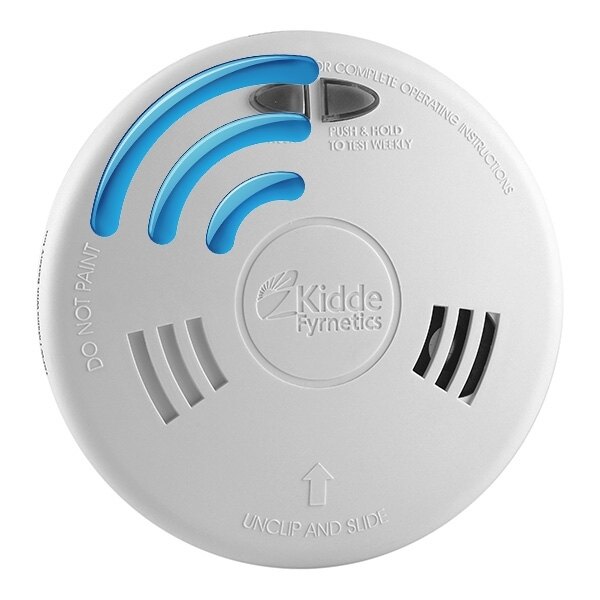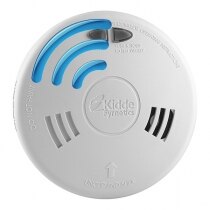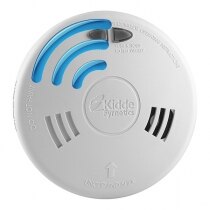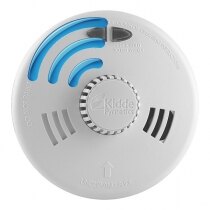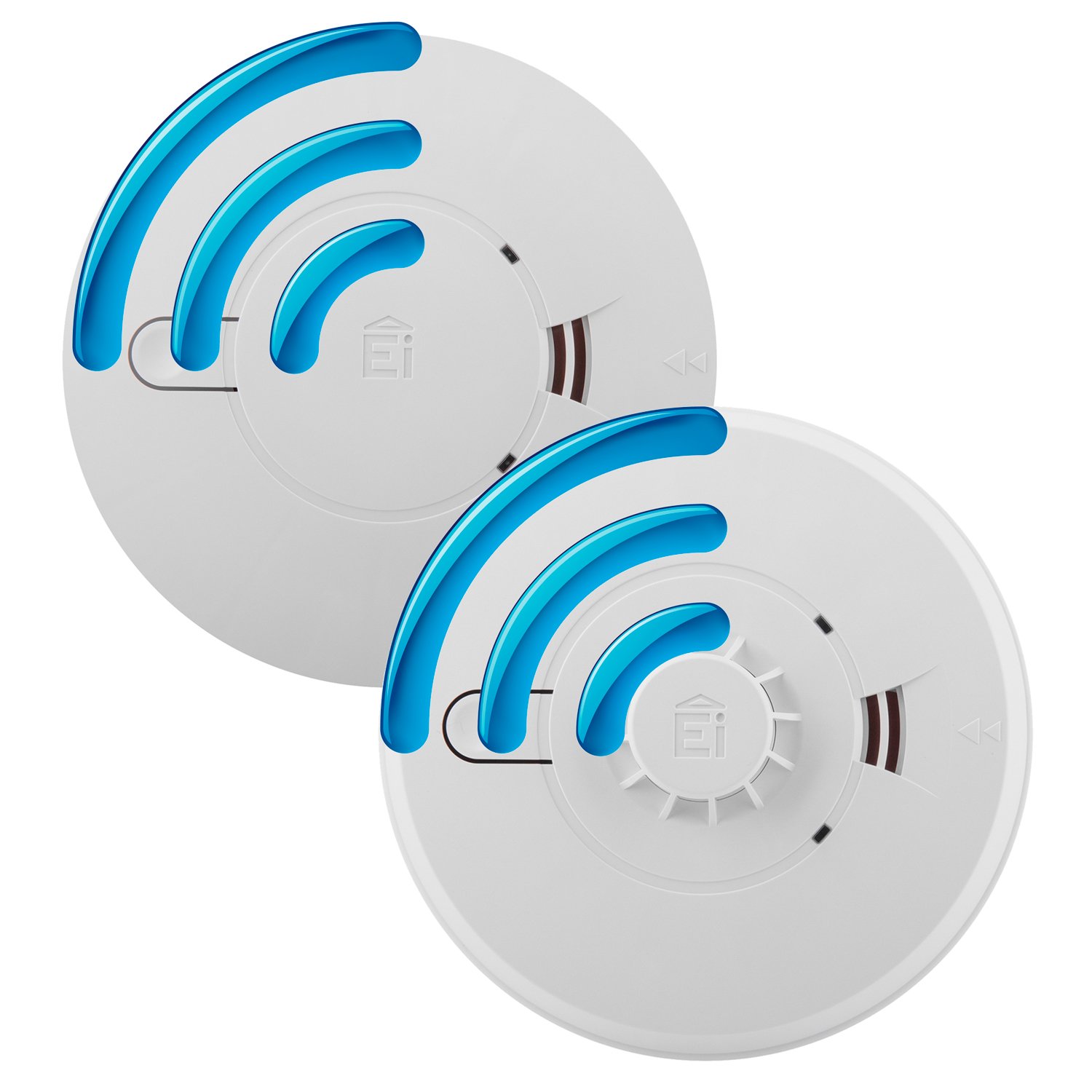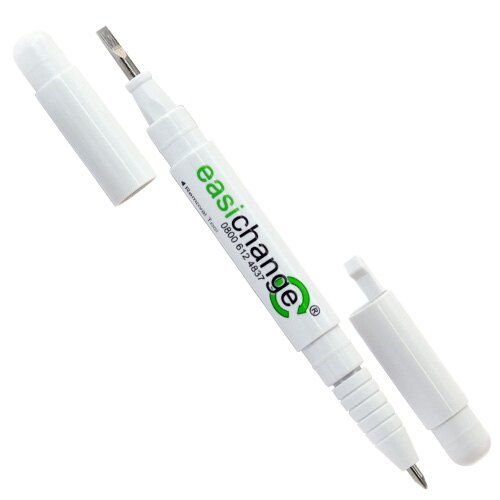-
Contact
Sales & Customer Service
0800 612 6537 support@safelincs.co.uk Live ChatDelivery Enquiries
0800 077 6149 - Resources
Fire & Safety Solutions
CALL OUR TEAM NOW 0800 612 6537
Lines open today 8am - 6pm
Quick Delivery
From £3.19 inc VAT
Live Chat - Online
Instant help & Advice
Trade Discounts
and exclusive pricing
0% Credit Available
Open an account now
5 Star Customer Feedback
Mains Radio-Interlink Smoke Alarms & Heat Alarms with Alkaline Back-up Battery - Kidde Slick SFWRF
Discontinued Product
The Kidde Slick range has been discontinued and is no longer available for purchase. We recommend instead the Aico Ei140 series with the Ei168RC wireless base, though these will require an electrician to replace the wiring.
alternative product
Ei140eRF Series - Smoke & Heat Alarms with Radio-interlink
- 230V mains powered with alkaline back-up battery
- Available in Optical and Heat versions (Ei146eRF, Ei144eRF)
- Interlinks via radio frequency with up to 12 units
- Kitemarked, CE marked and suitable for BS 5839-6: 2019 Grade D2
- All alarms also act as repeaters
- Please note: alarms are sold individually
- Also suitable for both the Welsh and Scottish 2022 legislation
£106.52 inc VAT
£88.77 ex VAT
Product Overview
Interlink
Compatible Alarms
Ancillary Products
Technical Data
FAQs (7)
Kidde Slick radio-interlinked (RF) smoke alarms are mains powered from the nearest light fitting and come with alkaline battery backup batteries. The units use radio technology to 'talk' to each other: when one alarm activates, all other units that are interlinked via radio-interlink begin to alarm within seconds. The RF technology negates the need for connection wire, making the installation simpler and cheaper.
- Complete radio-interlinked smoke alarm including RF (radio-frequency) transmitter
- Mains Powered with alkaline back-up battery
- Suitable for installations complying to BS 5839-6: 2019 Grade D2
- Kitemarked to BS EN 14604 (smoke), BS 5446-2 (heat), and CE marked
- 6 year warranty
- Unique identification coding eliminates RF interference with other equipment
- Up to 15 units can be interlinked
- Available in 3 versions:
- KE1SFWRF: Ionisation: for landings
- KE2SFWRF: Optical: for hallway, living rooms, bedrooms
- KE3SFWRF: Heat detector: for kitchen and garage
- Simple 'house coding'
- Neat Slimline Design
- Easy connection to wireless remote test and hush switch
- Very easy installation
- LED display
- Test/Hush button
- Low battery warning chirp
- Please note: alarms are sold individually
- This alarm is also suitable for the updated 2022 Scottish legislation for fire alarms in homes
Please Note: These units use the radio-interlink frequency 868.499MHz. This bandwidth is restricted for safety products, therefore the chances of interference should be limited.
The table below shows all the units that can interlink with the KE1SFWRF, KE2SFWRF and KE3SFWRF.
Alarms from the same series|
Model Number
|
Type of unit
|
Type of interlink
|
| KE1SFWRF | Ionisation Alarm with Alkaline Battery | Wireless interlink |
| KE2SFWRF | Optical Alarm with Alkaline Battery | Wireless interlink |
| KE3SFWRF | Heat Alarm with Alkaline Battery | Wireless interlink |
|
Model Number
|
Type of unit
|
Type of interlink
|
| KE1SFLLWRF | Ionisation Alarm with 10 Year Lithium Cell | Wireless interlink |
| KE2SFLLWRF | Optical Alarm with 10 Year Lithium Cell | Wireless interlink |
| KE3SFLLWRF | Heat Alarm with 10 Year Lithium Cell | Wireless interlink |
|
Model Number
|
Type of unit
|
Type of interlink
|
| KESRFRTH | Remote Control Test and Hush Switch | Wireless interlink |
| Product Code |
KE1SFWRF Ionisation Smoke Alarm: KE1SFWRF KE2SFWRF Optical Smoke Alarm: KE2SFWRF KE3SFWRF Heat Alarm: KE3SFWRF |
|---|---|
| Brand | Kidde |
| Back-Up Battery | 9V Alkaline |
| Dimensions (HxDia) | Ionisation Alarm: 60x135mm Optical Alarm: 60x135mm Heat Alarm: 89x135mm |
| Operating Temperature | 0 to 40°C |
| Relative Humidity | Up to 93% Relative Humidity |
| Sound Output | 85dB |
| Weight | 0.48kg |
| Product Datasheets |
Q. How can we test the alarm to make sure it is working?
A.
The manufacturer's recommendation is to test the alarm by pressing the test button. This will simulate a heat input at the heat sensor. You can also test it with a hair dryer but make sure that the hairdryer is kept away at a suitable distance from the alarm. Do not attempt to test the alarm by using open fire or excessive heat as this may damage the unit.
Q. My ceiling light is on a dimmer switch. Can I still power my radio-interlinked mains smoke alarms from this lighting supply?
A.
In modern housing the lighting circuit will travel around your house with the lights being fed from it. Between the circuit and the light will be a switch (or in this case a dimmer) which will control the light. Your mains powered alarms are connected directly to the circuit and have constant power, so are not affected by switches or dimmers. In older homes that have not had the electrics updated this may not be the case so it is advisable to consult an electrician.
Q. Does this alarm conform to BS 5446 part 1 as recommended by the Fire Service?
A.
BS 5446-1:2000 was withdrawn in 2008 and replaced by BS EN 14604:2005 to conform with European standards. All of our alarms containing a smoke detector (smoke only, smoke & heat, smoke & CO) are fully compliant with BS EN 14604:2005. They also comply with any other relevant standards relating to their other detection capabilities.
Q. I installed several KE1SFWRF, KE2SFWRF and KE3SFWRF wireless mains-powered smoke alarms. After installation of the 'master' and the 'slaves' the alarms flash every ten seconds. Is this correct?
Also, when carrying out a test pressing the 'master' test button, the 'slaves' beep for varying periods and sometimes seemingly endless. Pressing the hush button does not silence them quickly.
Also, when carrying out a test pressing the 'master' test button, the 'slaves' beep for varying periods and sometimes seemingly endless. Pressing the hush button does not silence them quickly.
A.
Flashing lights: The RF bases have visual LED lights on the sides which show the status of the bases. The green LED on the Master RF base will go out for a second once every ten seconds and the Remote RF base green LED goes out for only half a second every ten seconds. This shows normal operation. The smoke or heat alarms themselves have a green LED light which is constantly on when the mains power is connected. They also have a flashing red LED which shows normal operation. This typical flashes once every 30 to 35 seconds showing normal operation or flashes rapidly when in alarm state. Testing and silencing the 'slaves': The hush button on the 'slaves' only reduces sensitivity of the alarms (eg if you have burned some toast and the alarm goes off). It does not switch off the test sequence of the 'slaves' after you pressed the 'master' test button. This test sequence will continue for differing periods, which can be several alarm cycles long.
Q. Can I expand an existing system of Kidde Slick mains powered smoke alarms (with existing interlink through cable) with additional Slick RF smoke alarms as shown in http://www.safelincs.co.uk/kidde-slick-wireless-smoke-alarms/?
A.
Show All Yes, you need to add an RF base to just ONE of the existing smoke alarms. Make sure you connect the existing interconnect cable into the slot marked 'i' on the new RF base. Then you can add new RF slick smoke alarms to the system. Just make sure you go through the 'enrolment' process again to ensure all units recognise each other.
Approved Partner
Customer Reviews
28 customers have given this product an overall rating of 4.5 out of 5
Reviews by real customers
All of our product reviews are written by real customers that have purchased this product from us and are published without modification.Rating: 5 / 5 Stars
Reviewed by: J R
As expected
Published on: 13th June 2021
Rating: 5 / 5 Stars
Reviewed by:
Works fine
Published on: 14th September 2018
Rating: 5 / 5 Stars
Reviewed by:
Works fine
Published on: 14th September 2018
Looking for more information?
If you have any questions or would like more information about this product you can ask one of our specialists.
Live Chat Available Now
Direct Telephone
01507 464181




















